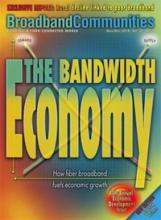Missoula Maps Local Fiber Assets, Encourages New Installation
Last August, we wrote and podcasted about the results of a broadband feasibility study for the City of Missoula, which recommended developing an open access network with approximately 60 miles of underground fiber through a public private partnership. The study also demonstrated a significant need for improved connectivity in the central business district, with almost 40% of businesses saying their connections were insufficient for their needs. The study also recommended a variety of fairly small policy changes to encourage the spread of fiber optics, such as a “dig once” conduit policy.
Early in December, the Missoula City Council acted on at at least one of those recommendations by lowering the fee the city charges for excavating and installing new fiber optic lines in the public right-of-way by 75 percent. City Councilwoman Caitlin Copple, who has spearheaded the efforts for better connectivity in Missoula and appeared on our Broadband Bits podcast in August, described lowering the fee this way to the Missoulian newspaper:
“It’s a gesture of good will to the service providers that we want to work with them,” said Copple, who chairs the city’s Economic Development Subcommittee. “It was a unanimous vote, and it shows Missoula is serious about business.”
The city also released a map, compiled by a third party, that shows all the privately-owned fiber assets in Missoula’s central business district. It is purposely unclear which company owns which segments of fiber, as the providers would only participate if their information was anonymized to protect their competitive edge. While certainly not present on every street, the map shows that there is a significant amount of fiber already in the ground. From the Missoulian:


